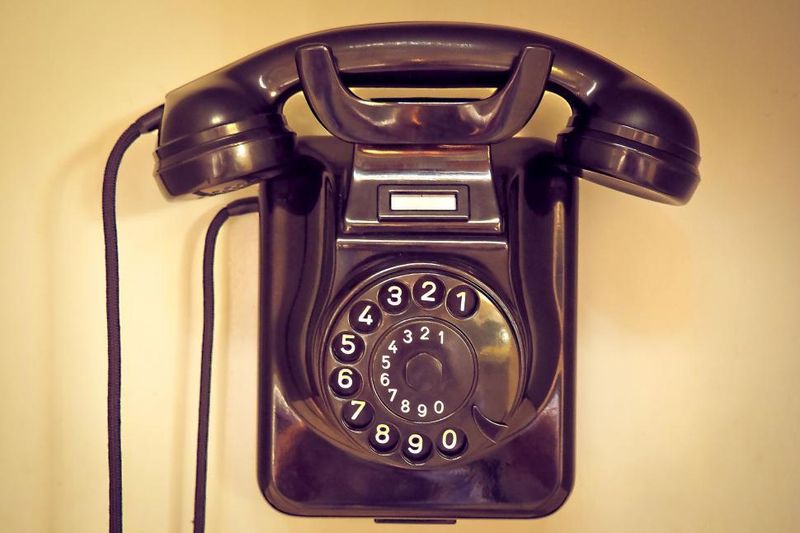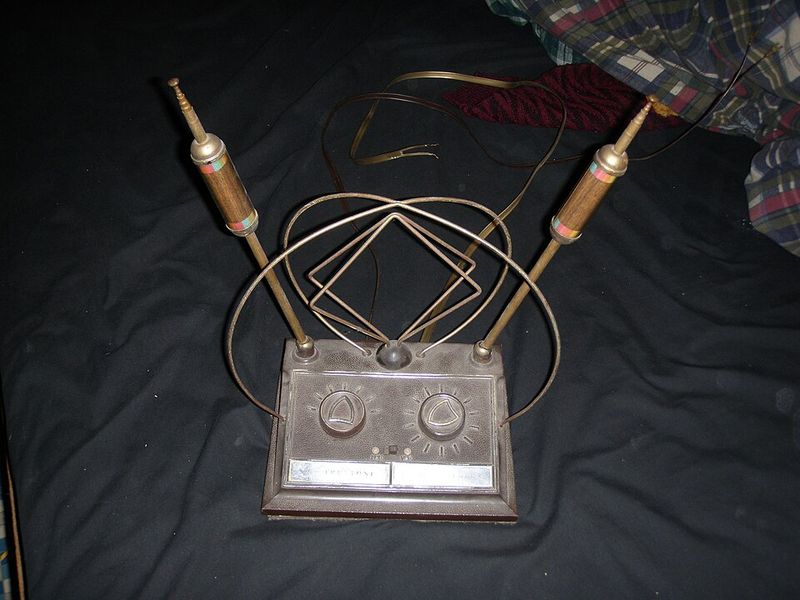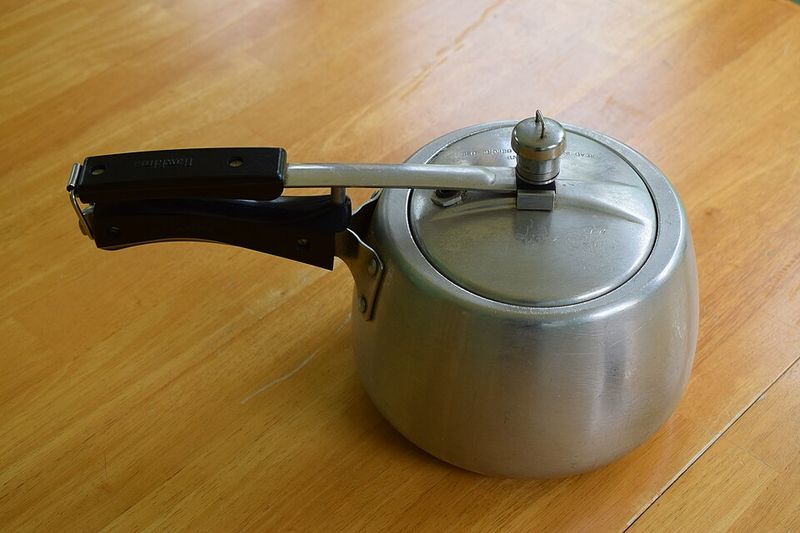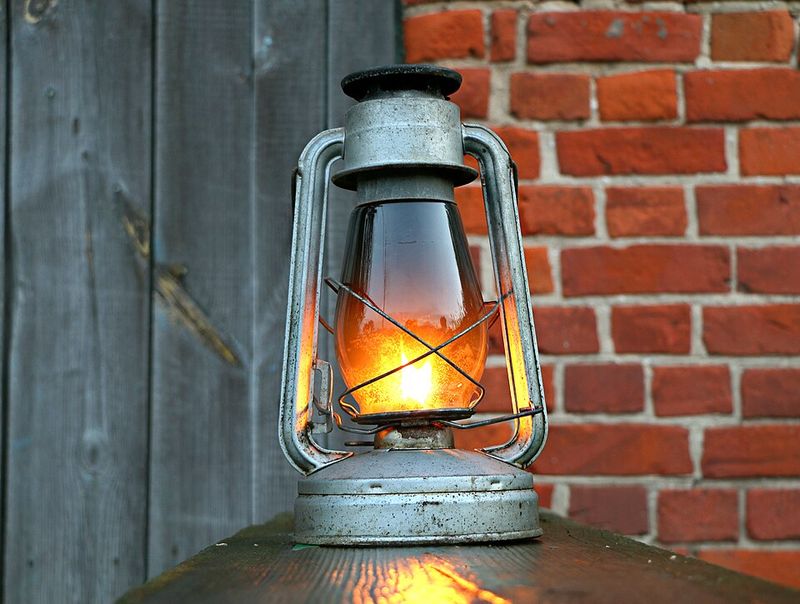Before smart gadgets and minimalist decor took over, homes ran on clever, durable tools that earned their keep. These weren’t trendy; they were trusted, passed down, and repaired until the job was done. If you’ve ever wondered how everyday tasks felt before touchscreens and apps, this nostalgic lineup will surprise you. Read on – you might discover a few classics worth bringing back into rotation.
1. Rotary Phones
Rotary phones didn’t just make calls; they created a small ritual. Your finger settled into each numbered slot, the dial whirred back with a mechanical sigh, and patience set the pace of conversation. They anchored households – often stationed on a hallway table beside the notepad and a stubby pencil. Their weight felt reassuring, their ring unmistakable, and the cord a gentle tether to one room. Wrong numbers were lessons in attention, not instant frustration. Parents swore by their durability; they could survive drops, decades, and everyday bangs. Privacy meant stretching the cord around corners, whispering from the staircase, or shutting a door. With sturdy components and zero notifications, rotary phones made talking intentional, memorable, and oddly serene.
2. TV Antennas (Rabbit Ears)
Rabbit ears transformed television into a hands-on sport. Someone squinted at the screen, another person angled the antenna just so, and a cry of “Don’t move!” crowned the victory. Parents swore by the ritual because it built patience and saved money – no cable subscription required. Fiddling with foil, tilting the set, or reorienting furniture made the difference between static and tonight’s lineup. It encouraged togetherness: teamwork for a clearer picture, and a shared sigh when clouds rolled in. Antennas taught practical physics – signal paths and interference – without anyone calling it science. When the channel came through, it felt earned. In an era of infinite streaming, rabbit ears remind us that scarcity sharpened the thrill of a well-tuned show.
3. Clotheslines
Clotheslines were the original energy savers and fabric whisperers. Fresh air and sunlight lifted dampness while infusing laundry with a scent no dryer sheet can replicate. Parents swore by the savings – no electricity, no lint trap, just weather and time. Clothespins bit into hems, and shirts danced like flags. Whites brightened under the sun’s natural bleaching, while stiff towels promised an exfoliating wake-up call. There were rules, too: heavier items at the ends, unmentionables hidden between sheets, and storm clouds watched like hawks. Hanging laundry became a meditative pause and a neighborhood signal that chores were underway. Clotheslines didn’t just dry; they taught patience, thrift, and the quiet pleasure of wind working for you.
4. Pressure Cookers (Stovetop, Hissing)
Before programmable electric models, stovetop pressure cookers ruled busy weeknights. Their hisses and rattles signaled efficiency – meals that normally simmered for hours arrived tender in a fraction of the time. Parents respected the ritual: checking gaskets, aligning the lid, and watching the jiggler like a hawk. The sound was intimidating yet reassuring, a soundtrack of practicality. Beans softened, stews deepened, and cheap cuts turned silky. Recipes were measured in whistles and instinct. Safety was a practiced dance – cool-downs, careful venting, and never forcing the lid. These cookers taught vigilance and rewarded it with reliable, flavorful results. Even today, that expressive steam cap feels like a tiny conductor leading dinner to the table right on cue.
5. Sewing Baskets
Every household had a sewing basket brimming with possibility. Spools of thread, a tomato pincushion, stray buttons, and a reliable needle turned small disasters into quick fixes. Parents swore by the basket because clothes were investments – not disposable. A popped seam meant ten minutes, not a shopping trip. Mending taught precision, patience, and the pleasure of saving a favorite garment. The basket carried family history, too: inherited thimbles, labeled needles, and buttons clipped from retired coats. Weekend afternoons might involve hemming curtains or patching knee holes while stories unspooled. Even today, a simple kit outperforms convenience when a cuff falls or a strap snaps. The sewing basket made self-sufficiency feel beautifully ordinary.
6. Manual Egg Beaters
Manual egg beaters harnessed elbow grease to whip, fluff, and blend. A steady crank and consistent rhythm transformed eggs into clouds and cream into peaks – no outlets required. Parents swore by their reliability and control; you could feel the mixture thicken under your palm. They were quiet, easy to rinse, and gentle on delicate batters. Kids learned coordination by helping at the bowl, building finesse instead of button-pushing habits. These beaters traveled outdoors for picnics and powered through blackouts without missing dessert. Their compact footprint and longevity made them staples in modest kitchens. When electricity wasn’t guaranteed or noise wasn’t welcome, the manual beater delivered whisper-quiet performance and old-school satisfaction.
7. Ashtrays (Even in Non-Smoking Homes)
Ashtrays survived on coffee tables whether anyone smoked or not. They were practical catch-alls: a landing pad for spent matches, candy wrappers, bottle caps, or loose change. Parents kept them for guests, etiquette, and sheer utility. Designs ranged from hotel souvenirs to sculptural glass that doubled as decor. In an era when smoking was common, an ashtray signaled readiness and hospitality. Even in non-smoking homes, they corralled clutter and protected surfaces from heat. Their hefty glass felt indestructible, easy to wash, hard to misplace. Today, they read as vintage trinkets, but their secret power remains: keeping small chaos contained and giving heavy objects a stylish place to rest.
8. Oil Lamps
Oil lamps were the unglamorous heroes of power outages. A quick trim of the wick, a match strike, and the room bloomed in warm, steady light. Parents swore by their reliability – no batteries to hunt, no flickering flashlight beams. The glow encouraged card games, whispered stories, and a calmer pace. Lamps taught maintenance: refilling reservoirs, cleaning chimneys, and respecting open flame. They doubled as decor, adding rustic charm when not in use. During storms, the lamp’s halo felt both practical and comforting, a beacon promising normalcy. Even today, a well-kept oil lamp can outlast a drawer of dying batteries, turning downtime into an intentional, copper-and-glass ritual.
9. Recipe Boxes
Before digital bookmarks, families cooked from boxes stuffed with stained index cards. Each card carried a voice—handwriting, smudged butter, and a note like “use less sugar.” Parents swore by the reliability: tested, tweaked, and handed down. The box organized meals by tabs and seasons, promising dinner even when inspiration ran dry. Family lore lived between measurements and marginalia; holidays had their own patina of gravy and cinnamon. Sharing a recipe meant copying by hand, gifting a piece of kitchen history. Unlike links that vanish, these cards persist, spilling out little clouds of flour-scented memory. A recipe box isn’t just storage; it’s a culinary time capsule that keeps tradition alive.
10. Hot Water Bottles
Hot water bottles were the original targeted heat therapy. Fill, burp the air, screw tight, and warmth radiated for hours. Parents swore by them for cramps, backaches, and icy toes under winter quilts. They were budget-friendly, reusable, and blissfully cord-free. A knitted cover prevented burns while holding heat close. During cold snaps, bottles migrated from sofa to bed like portable hearths. No microwaves, no batteries – just a kettle and common sense. Their gentle, moist heat soothed without noise or blinking lights, inviting rest rather than distraction. Even today, a sturdy bottle outperforms many gadgets, combining simplicity, comfort, and quiet reliability when you need it most.
11. Tupperware Parties
Tupperware parties turned storage into a social circuit. Friends gathered, sampled snacks, and learned the magic “burp” that sealed freshness. Parents swore by the durability – containers that survived falls, freezers, and decades of leftovers. The parties empowered home entrepreneurs, blending community with commerce long before influencer culture. Lids matched bottoms, pantries looked tidy, and lunches traveled leak-free. Demonstrations doubled as mini-classes on portioning, reheating, and organizing. The purchases felt like investments in calm, visible order. Beyond the plastic, these gatherings stitched neighborhoods together, proving that good design and good company could share the same table.
12. TV Guides
Planning television once meant flipping pages, not scrolling endlessly. TV Guide organized prime time into tidy grids, spotlighting specials, and circling can’t-miss episodes with a pen. Parents swore by it for avoiding channel-surfing chaos and making family viewing intentional. The weekly ritual fostered anticipation: snacks prepped, phone off the hook, and the good spot on the couch claimed early. Listings taught scheduling and trade-offs – news versus sitcoms, movie night versus homework. Ads teased next week’s premieres, and crossword puzzles filled commercial breaks. With fewer choices, commitment felt exciting, not limiting. TV Guides made evenings purposeful, turning programming into a plan rather than a background hum.
















